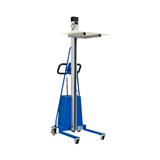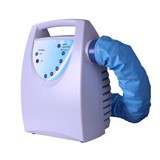Key takeaways
- Improve patient access with AI triage: Virtual triage systems guide patients efficiently, prioritising urgent cases and reducing appointment bottlenecks.
- Streamline administrative workflows: Virtual receptionists manage bookings, reminders, and patient queries, freeing clinical staff to focus on care.
- Enhance patient satisfaction: Faster response times, reduced phone queues, and accurate appointment management improve patient experience.
- Support compliance and data security: AI solutions can integrate with Practice Management Software (PMS) to maintain patient privacy, meet Australian health regulations, and automatically log patient interactions.
- Boost clinic efficiency without extra staff: Clinics can maintain high service levels without increasing staff hours or overheads.
Introduction: The digital shift in Australian clinics
In 2025, Australian medical practices face growing demand, rising operational costs, and staff burnout. Patients expect faster access, shorter wait times, and seamless communication. Virtual receptionists and AI triage solutions are rapidly gaining traction because they streamline workflows, enhance patient experience, and reduce administrative burden, all without adding headcount.
This article explores why more clinics are adopting these solutions, how they work, and actionable strategies to implement them in your practice.
1. Understanding virtual receptionists and AI triage
Virtual receptionists are cloud-based systems or outsourced services that handle phone calls, bookings, and patient queries. They act as the first point of contact, replicating the role of an in-practice receptionist virtually.
AI triage systems use algorithms to assess patient symptoms and urgency, directing them to the appropriate care pathway, whether that’s a same-day appointment, telehealth consult, or self-care advice.
Practical insight: Australian clinics using AI triage report up to 30% faster appointment allocation, reducing bottlenecks and improving staff workflow.
2. Key benefits for clinics
- Operational efficiency: Automating repetitive tasks like appointment booking, reminders, and patient queries frees staff for clinical care.
- Reduced wait times: AI triage ensures urgent patients are prioritised, while routine cases are scheduled efficiently.
- Improved patient experience: Patients get quicker responses, fewer phone queues, and clearer guidance.
- Staff wellbeing: Administrative burden reduction lowers burnout risk, improving retention.
- Scalable solution: Virtual receptionists can handle high call volumes during peak periods without hiring additional staff.
Case study: A Melbourne GP clinic implemented an AI triage system alongside virtual reception. Within three months, in-clinic patient wait times fell by 20%, and phone response times dropped from an average of 3 minutes to under 45 seconds.
3. How AI triage works in practice
- Symptom collection: Patients input symptoms via app, portal, or phone.
- Urgency assessment: Algorithms assess risk factors, flagging high-priority cases.
- Routing: Patients are automatically directed to telehealth, urgent care, or scheduled appointments.
- Data integration: Patient records update automatically in PMS, ensuring continuity of care.
Example: A Brisbane physiotherapy clinic integrated AI triage with its PMS. Patients with minor injuries received home exercise guidance, while urgent cases were fast-tracked for in-person care. The system reduced unnecessary appointments by 18% and optimised staff schedules.
4. Choosing the right virtual receptionist solution
When selecting a system, consider:
- Integration with PMS: Essential for seamless booking, billing, and record keeping.
- AI sophistication: Look for evidence-based symptom algorithms approved by Australian healthcare authorities.
- Patient communication channels: Systems should handle phone, email, and portal interactions.
- Scalability and peak-load management: Can the solution manage high call or message volumes?
- Compliance: Ensure GDPR/Australian Privacy Principles compliance for patient data security.
Practical tip: Evaluate solutions like HotDoc, HealthEngine, or GoInClinic, focusing on integration and AI triage capabilities tailored to your practice type.
5. Common challenges and how to overcome them
- Patient trust: Some patients may be hesitant to use AI triage. Educate them on accuracy and data privacy.
- Staff adaptation: Train staff to work alongside AI, using it to augment, not replace, human decision-making.
- Technical reliability: Ensure strong IT infrastructure and regular maintenance to prevent system downtime.
- Cost considerations: Balance initial investment with long-term time savings and efficiency gains.
Example: A Sydney dental practice experienced pushback initially but overcame it by demonstrating improved booking efficiency and reduced missed appointments after two months.
6. Measuring ROI and performance
Track key metrics to evaluate effectiveness:
- Call handling time reduction
- Average patient wait time
- Appointment no-show rate
- Patient satisfaction scores
- Staff satisfaction and turnover
Scenario: A Perth GP practice monitored these KPIs after implementing virtual reception. They recorded a 25% decrease in no-shows, 20% faster patient intake, and improved staff satisfaction scores within four months.
7. Future trends in virtual reception and AI triage
- Advanced natural language processing: More sophisticated patient interaction, closer to human conversation.
- Telehealth integration: Seamless routing between virtual triage and remote consultations.
- Predictive analytics: AI anticipates patient demand, allowing clinics to proactively allocate resources.
- Voice recognition and multilingual support: Improves accessibility for diverse Australian populations.
- Integration with wearable data: Future AI may use patient vitals from wearable devices to refine urgency assessments.
Conclusion
Virtual receptionists and AI triage are transforming Australian clinics, offering a practical solution to administrative bottlenecks, patient wait times, and staff burnout. By carefully selecting the right system, integrating it with your PMS, and educating both staff and patients, your practice can achieve higher operational efficiency, enhanced patient satisfaction, and better clinical outcomes, without increasing staff hours.




-160x160-state_article-rel-cat.png)








